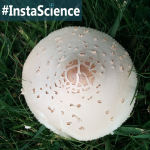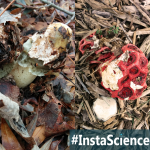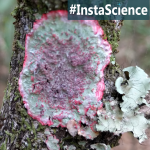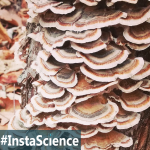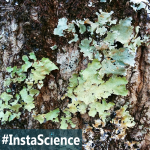The parasol mushroom looks a bit like a button mushroom when it first pops out from the ground in late summer or early fall, but the cap quickly spreads out to resemble the vintage shade umbrella known as a parasol, and these mushrooms are popping up all over our yard right now! You can listen to this post about the parasol mushroom or keep on reading. Either way, you can download a set of … [Read more...]
The Stinkhorn – A Mushroom Only A Mother Could Love
It “hatches.” It smells like death. Some have a questionable shape. What’s not to love about stinkhorn mushrooms? Stinkhorn mushrooms like to grow on rotting organic matter, so you typically find them in your mulch beds. But don't worry, if you don’t want these stinky ‘shrooms showing up in your flower bed, you can replace your hardwood mulch with pine needles. Like all mushrooms, what we … [Read more...]
See a Beautiful Holiday Nature Spotlight {Christmas Lichen}
The first time I saw Christmas lichen I was stunned. This dinner-plate-like lichen is festively colored and perfect to learn about during December, even though it only grows in along the Gulf Coast and coastal plains. The Christmas lichen is a brightly colored example of a crustose lichen. These types of lichens are often round, flat, and somewhat crusty. Crustose lichens typically grow on tree … [Read more...]
Turkey Tail {InstaScience}
I’ll be honest, I know what shelf fungus is, but until we starting doing nature study in our our homeschool, I never really considered that there were different types of shelf fungus. Oh sure, I had noticed differences, but we never really thought to find out why. You may feel the same way and it’s cool, I understand. But, let me tell you there is an awesome variety of shelf fungi out there. … [Read more...]
Lichens {InstaScience}
Lichens are found throughout the world, growing on tree trunks and rocks. Lichens can be found in some of the harshest environments, such as the arctic tundra, which makes them great subjects for winter science! Lichens are the result of a symbiotic, or mutually beneficial, partnership between a fungus and an alga plant or a bacterium. In other words, they are technically not plants, but rather … [Read more...]
 Sign up below to receive weekly tips & tools for homeschool science and we'll send you a FREE copy of
Sign up below to receive weekly tips & tools for homeschool science and we'll send you a FREE copy of 